How Finmap Helps Manufacturing Companies Bring Financial Order
What do you rely on when it’s time to make a financial decision?
For the accountant, it’s tax regulations. For the workshop manager — technical cards, the production schedule, the manufacturing plan. But what about you, the owner? An Excel file with no update date? A message from a supplier in your messenger? A negative bank balance?
In manufacturing, money moves daily: prepayments to suppliers, employee advances, countless small expenses, payments to contractors, raw material purchases, rent, loans… And without a system, all of this turns into financial chaos.
Let’s break down the key financial problems manufacturing companies face — and show how Finmap helps bring order to the numbers, reduce chaos, and make confident decisions.
.webp)
How to Bring Manufacturing Finances Into a Single System
In manufacturing, financial data accumulates across dozens of sources: bank accounts, CRMs with orders, Excel sheets with production line plans, inventory management, accounting. Often this is topped off by the personal cards of owners or managers.
As a result, the picture is fragmented: to understand the real state of affairs, you have to manually reconcile inventory balances, supplier orders, client payments, and production costs.
Why this is risky for the business:
- Loss of control over working capital — at any moment, you may discover that there's less money in the account than expected.
- Risk of cash gaps — raw material purchases and overhead costs are paid before payments from clients come in.
- Cost calculation errors — due to incomplete data, it's hard to assess the real profitability of orders or production lines.
- Financial chaos between departments — procurement, sales, and production all keep separate records, so the owner sees no single source of financial truth.
- Lost time for the owner — instead of growing the business, you’re stuck reconciling spreadsheets and checking balances manually.
All Accounts Under Control — From Bank to Warehouse
The first step toward financial transparency is consolidating all company accounts into a single system. In Finmap, you can add:
- Bank accounts, sole proprietorships, cash registers, and cards — and see their balances in real time. Use integrations with banks and payment systems to automate data collection, and import statements to streamline work with banks that don’t integrate.
- Petty cash and advance payments — to account for money temporarily held by employees. Add subordinates to the system and set flexible access rights to understand how each department or workshop is handling funds.
- Virtual warehouse account — which shows the value of goods or raw materials on hand in monetary terms. Track the movement of goods by value and deduct the cost of materials that were actually consumed.
Thanks to this, you immediately see how much money is available right now, where it’s stored, and how much is “frozen” in inventory. Balances update automatically and regularly, and you can reconcile all figures in seconds — from any device, anywhere in the world.
Connect Systems That Influence Your Money — and Gain Full Transparency
To get a complete financial picture, it’s not enough to just see account balances — you also need to understand what financial processes are happening across the business. In Finmap, this can be done through the open API.
You can connect the following to Finmap:
- CRM system — so deals automatically sync with your financial records.
- Inventory management system — to track purchases, raw material write-offs, and see their impact on cash flow.
- Accounting, document management, or other services — if you need visibility into additional business processes.
You can set up the integration yourself or use Finmap’s in-house integration specialist, who will adapt the system to your business structure.
As a result, you get a unified system that brings together everything that affects your finances: sales, expenses, warehouse balances, settlements. At the center — Finmap, as the single source of financial truth.
Control Over Settlements With Clients and Suppliers
In manufacturing, money rarely moves in sync. You've already paid for raw materials, logistics, salaries — and the client will pay in 15–30 days, or even later. All of this creates cash gaps: money seems to be in circulation, but your accounts are empty.
At the same time, managing settlements is difficult. Some clients delay payment, others ask for deferments. Suppliers demand prepayment and enforce strict deadlines.
Without systematic tracking, it's easy to miss a debt, confuse payment dates, or lose credibility with partners.
Here’s what that leads to:
- You don’t know who owes you and how much — instead of a clear debtor list, you search through messages or spreadsheets.
- You might miss a payment deadline and lose a supplier — because obligations fall out of sight without a unified payment calendar.
- Contractors call before you remember the invoice — damaging your reputation and complicating future cooperation.
- You can’t see when to expect incoming payments or how to plan outgoing ones — it’s all based on guesswork instead of numbers.
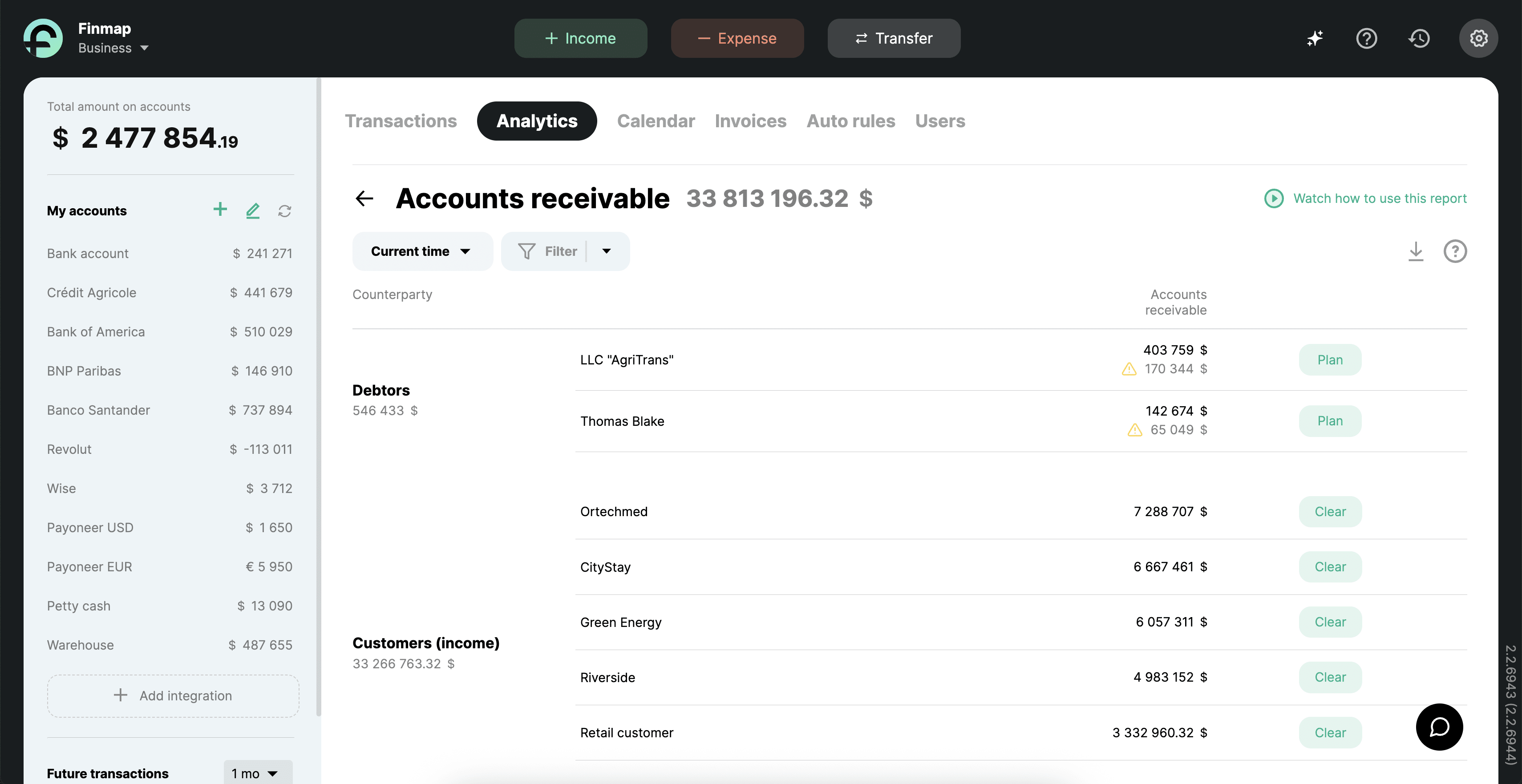
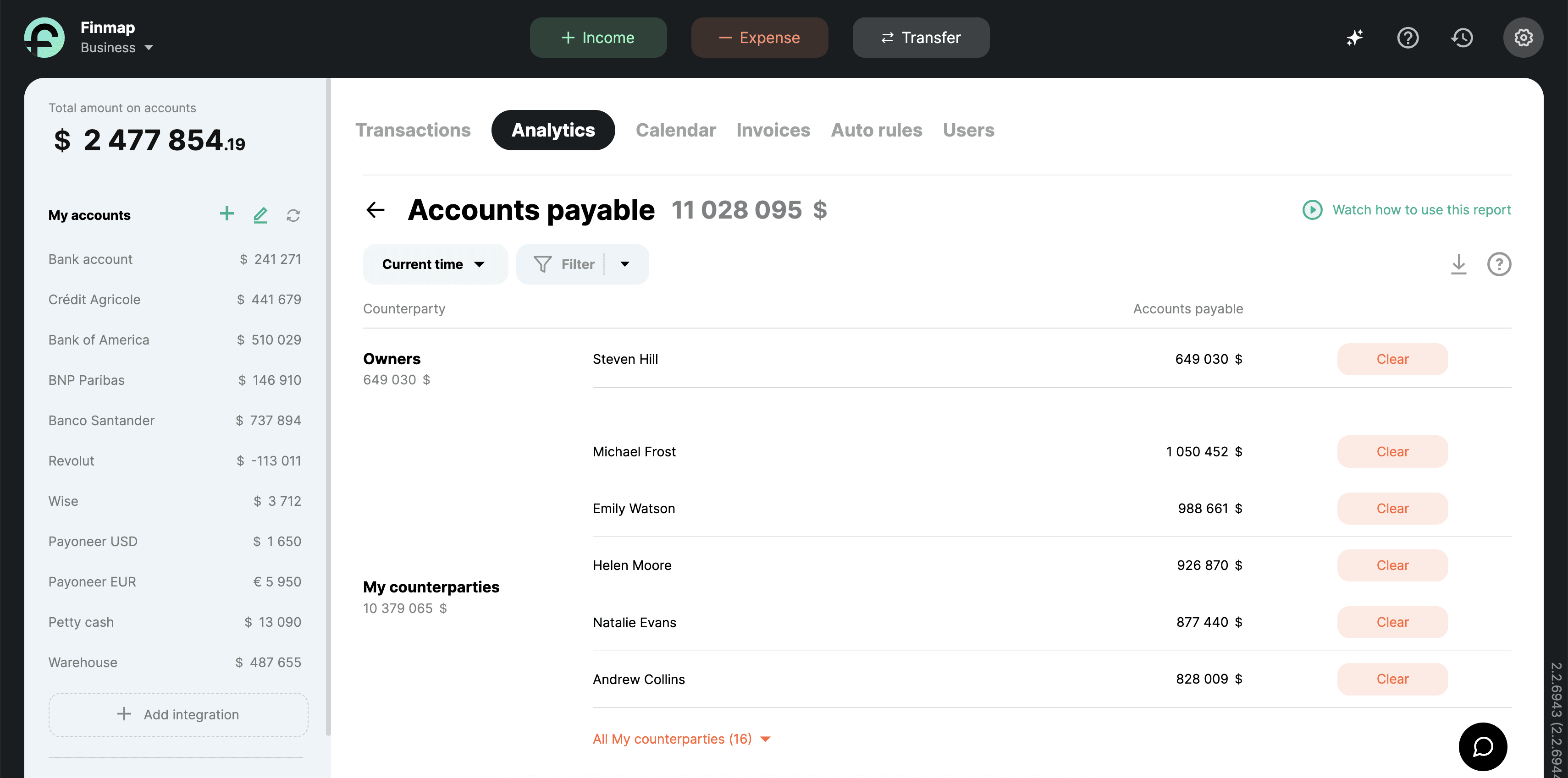
To avoid falling into the trap of cash gaps and losing control over settlements, you should focus on three essential steps. Here’s what to implement — and how it’s done in Finmap:
Why Should You Calculate DSO?
DSO answers a simple but critical question: How many days after a sale do you actually receive the money in your account?
The higher your DSO, the greater the pressure on liquidity and working capital.
According to Kaplan Group research:
42% of companies have a DSO over 46 days — and among large manufacturing firms, that number is as high as 70%.
When this indicator stretches out, it's not just “paper debt” — it’s real money you can’t use for buying raw materials, paying salaries, or growing the business.
DSO benchmarks for different types of production:
If you control your DSO — you control your liquidity. If not — you’re operating in debt, even if you show a profit on paper.
What Actually Drives Profit in Manufacturing
In manufacturing companies, it’s often difficult to determine which specific products, orders, or business lines are truly profitable.
The reason — lack of detailed tracking by financial responsibility centers or projects.
Frequently, both direct and indirect costs (purchases, wages, logistics, rent) are accumulated in a general production account without being allocated to specific product types or customer orders.
As a result:
- Loss-making products are “hidden” among profitable ones, distorting the financial picture.
- Budget is spent on unprofitable areas that don’t generate margin.
- Management decisions are made based on intuition, not analytics.
This is a systemic issue that erodes profitability — even when the company is growing in production or sales volume.
According to McKinsey:
About 40% of executives reduce their product portfolios to lower complexity and increase overall profitability.
Such decisions cannot be made based on gut feeling — they require solid data.
How Finmap Helps Organize Effective Project-Based Management
That’s exactly what the Projects report in Finmap provides. You see each direction — along with its components (subprojects) — as a separate financial unit: income, expenses, cost of goods sold, operating profit, and profitability.
A “project” doesn’t have to be just a business line. In your company, it could be:
- A specific type of product — for example, production of kitchen furniture, children’s beds, or metal structures.
- A batch for a specific client — a custom order with its own budget, timeline, and expenses.
- Pilot production of a new product — to assess the economic feasibility of scaling it into mass production.
- A contract or tender — such as supplying products to a government buyer.
- Outsourced production — when your company manufactures goods for other brands.
- A specific workshop or production line — to evaluate the efficiency of different departments.
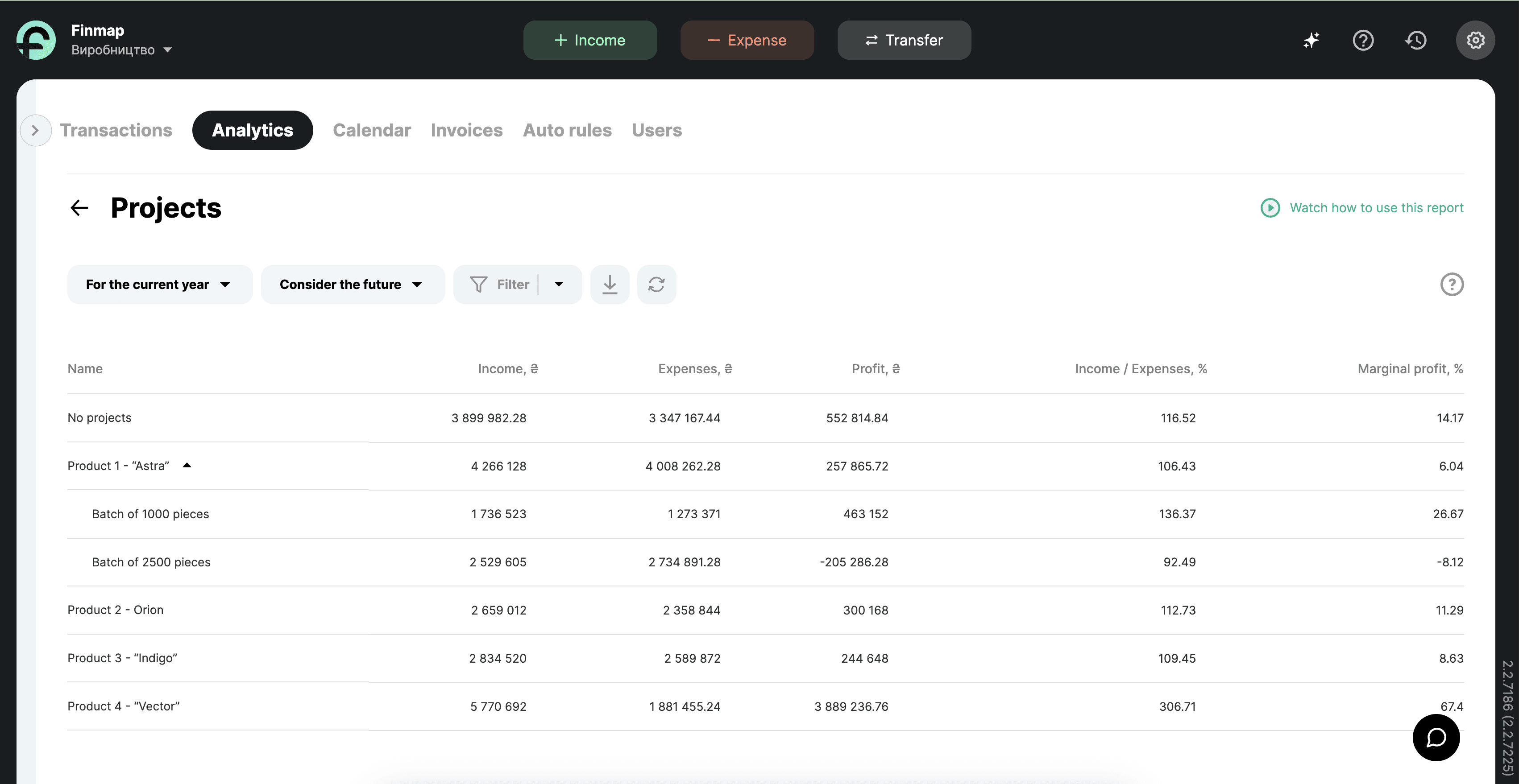
The importance of project-based management isn’t just a theory. Research from ScienceDirect confirms how unevenly different products contribute to a company’s profitability:
On average, only about 20% of a manufacturing company’s products generate more than 150% of its total profit. This means the remaining 80% either barely break even — or are actually loss-making.
Can you confidently name which of your products generate the most profit?
Financially strong manufacturing isn’t about total revenue — it’s about analytics that clarify what should be scaled and what should be cut.
From Chaos in Excel to Structured Management: The Case of Practik
PRACTIK is a Ukrainian producer of innovative food for dogs and cats, positioning its product as a complete meal — not just pet feed. To ensure high-quality standards, the company built two factories from scratch in Ukraine — allowing full control over every stage of production.
The company manufactures products in two main directions: food for cats and food for dogs. Each direction has its own product lines, which are constantly updated and improved.

Before implementing Finmap, the company tried to manage its finances in Excel. But as the business grew and revenue sources multiplied, the spreadsheets could no longer keep up — automation became impossible, and gaining a full financial picture was out of reach.
However, it wasn’t just about automation. The company had deeper reasons to move toward systematic financial management:
- Cash flow couldn’t be tracked manually — income from different directions merged into a single flow without breakdowns.
- No centralized analytics for decision-making — expenses weren’t recorded in one system.
- Uncertainty about balances and investment funds — forecasting available resources was difficult.
- Multiple business lines, but no unified system — real estate rental, investments, and B2C sales all needed a single financial interface.
- Need for delegation — finances were handled solely by a co-owner, which limited growth
Once the company decided to implement structured financial management, they turned to Finmap’s financial manager. He helped build the right structure and configure key processes — tailored to the specific needs of their business.
Control and financial management were then delegated to an internal specialist, Natalia, who is now responsible for the company’s finances and shares her experience working with Finmap:
Once we started seeing all income and expenses in one place, it became much easier to make decisions. Now we understand how much money is available, where overspending occurs, and how prices change month to month.
What Changed After Switching to Finmap
After switching to Finmap, the company gained not just a convenient tool — but a complete financial management system.
Here’s what changed in practice:
- Practik gained full control over its finances. All income and expenses are now in one system, with transparent analytics and clear balances.
- Management can now see how much money is available for investment, where overspending happens, and how purchase prices are changing — enabling decisions based on numbers, not guesses.
- Financial processes became structured: the team reviews reports monthly, analyzes expenses, and plans the budget based on real-time trends.
- Cash gaps are no longer a surprise — only expected and prepared for. Delegating financial management allowed the owners to focus on scaling the business.
With Finmap, we’re putting order not only into our numbers, but into the entire business. It gives us confidence, stability, and the ability to move forward. — the Practik team summarizes
Finmap — A Tool for Control, Confidence, and Growth
Financial management is the answer to daily questions: Can we make this purchase today? Will we have enough cash for payroll? Which product line should we scale, and which one should we shut down?
In manufacturing, these decisions are costly. And mistakes don’t happen due to lack of experience — but due to lack of data.
Finmap helps consolidate all your financial information into one system, see the real-time picture, build forecasts, and avoid critical errors. That’s why it’s chosen by manufacturers who want to grow — not blindly, but systematically.
Book a free consultation with a Finmap expert — and see how it works for your business.
Frequently Asked Questions
1. Why switch from Excel if it works?
Excel doesn’t provide a current picture — data gets outdated quickly, it’s hard to consolidate reports from different sources, and there’s no automation. It works up to a certain scale, but then starts slowing growth.
2. How do I know how much money can be invested vs. kept for operational costs?
You need a system that shows available balances and upcoming obligations. This allows you to make informed investment decisions without risking missed payments.
3. Our raw material prices are constantly changing. How can we track when and why costs are rising?
Regularly recording expenses in a structured format lets you see purchasing trends and respond to changes in time.
4. How do I identify where money is being lost if sales are stable but profit isn’t growing?
You need records that show expenses by category and business line. This will help identify overspending, hidden costs, or inefficient processes.
5. Can financial management be delegated if we don’t have a CFO?
Yes — the key is setting up a proper accounting structure. From there, it can be managed by a responsible person: an accountant, office manager, or administrator. The business owner will receive reports in a clear and convenient format.


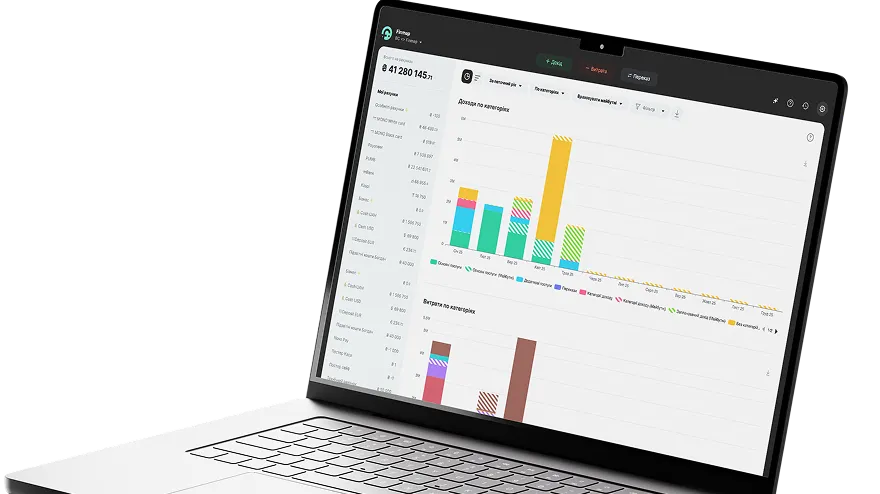
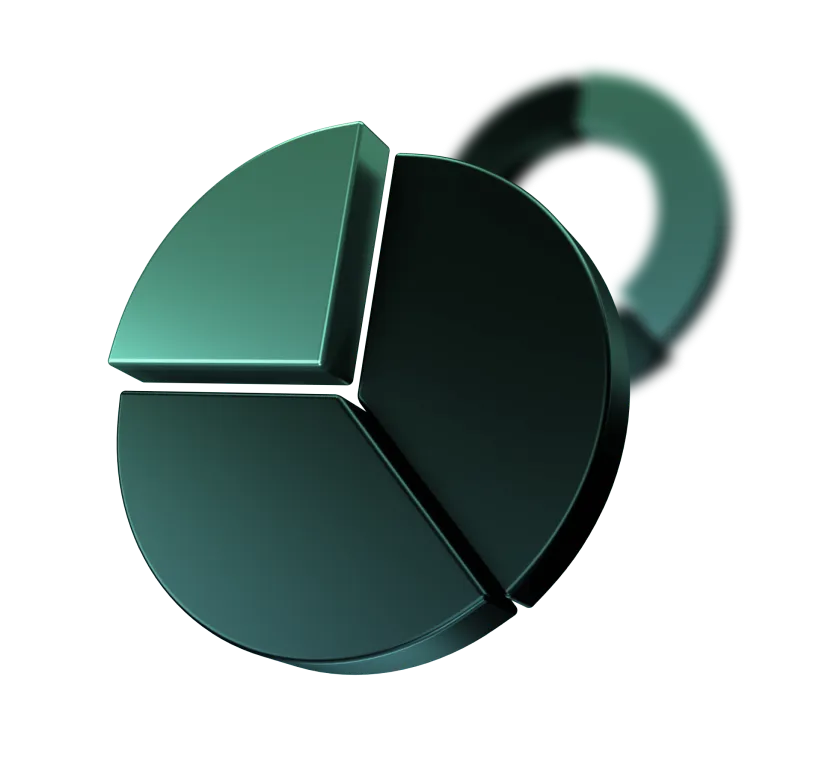
.webp)

